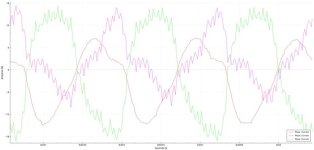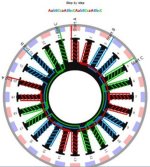I'm just wondering if some one here can help! Iv been working on small hub motors for a skate board, I dont want to just go an offe the shelf convention, I have recently changed for 14pole to 24n28pole but my winding seems to be off.
I have wound it in a Wye configuration it seems to not be 120deg
These are my test results.
Ps. I can add square wave if it's needed.
I have wound it in a Wye configuration it seems to not be 120deg
These are my test results.
Ps. I can add square wave if it's needed.






